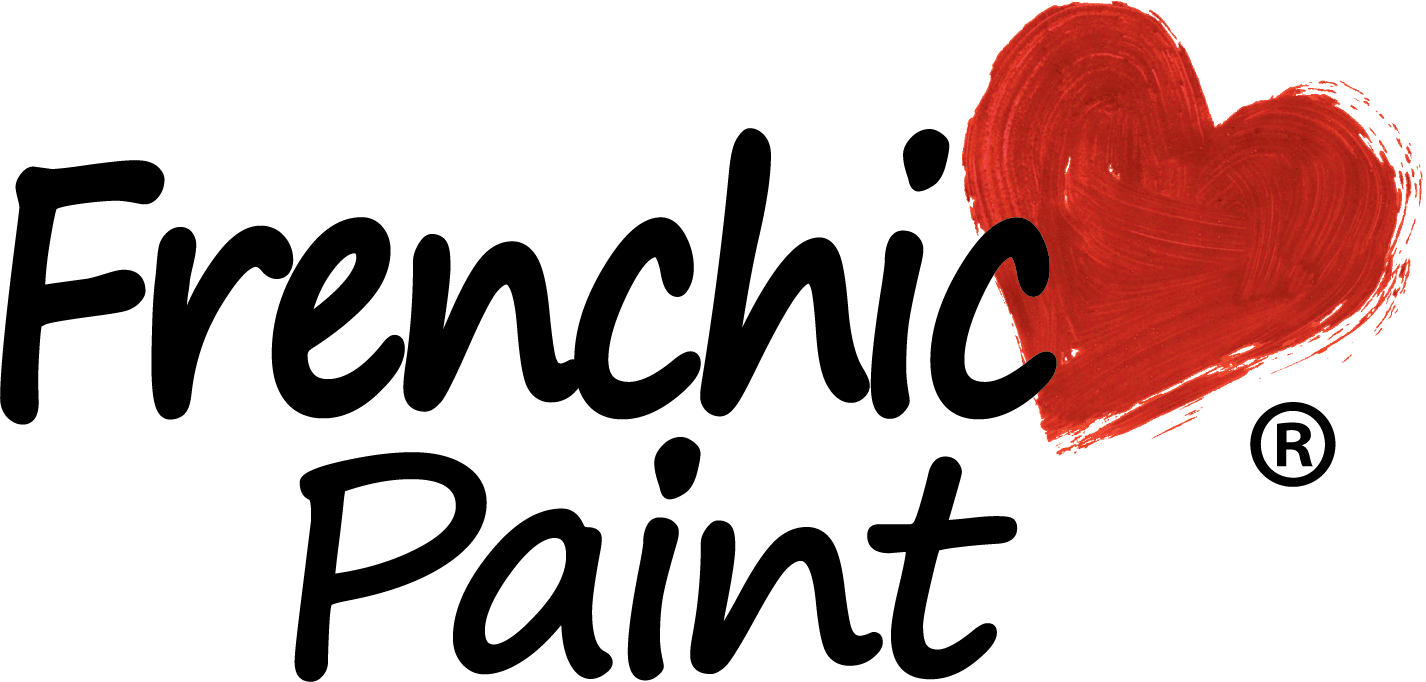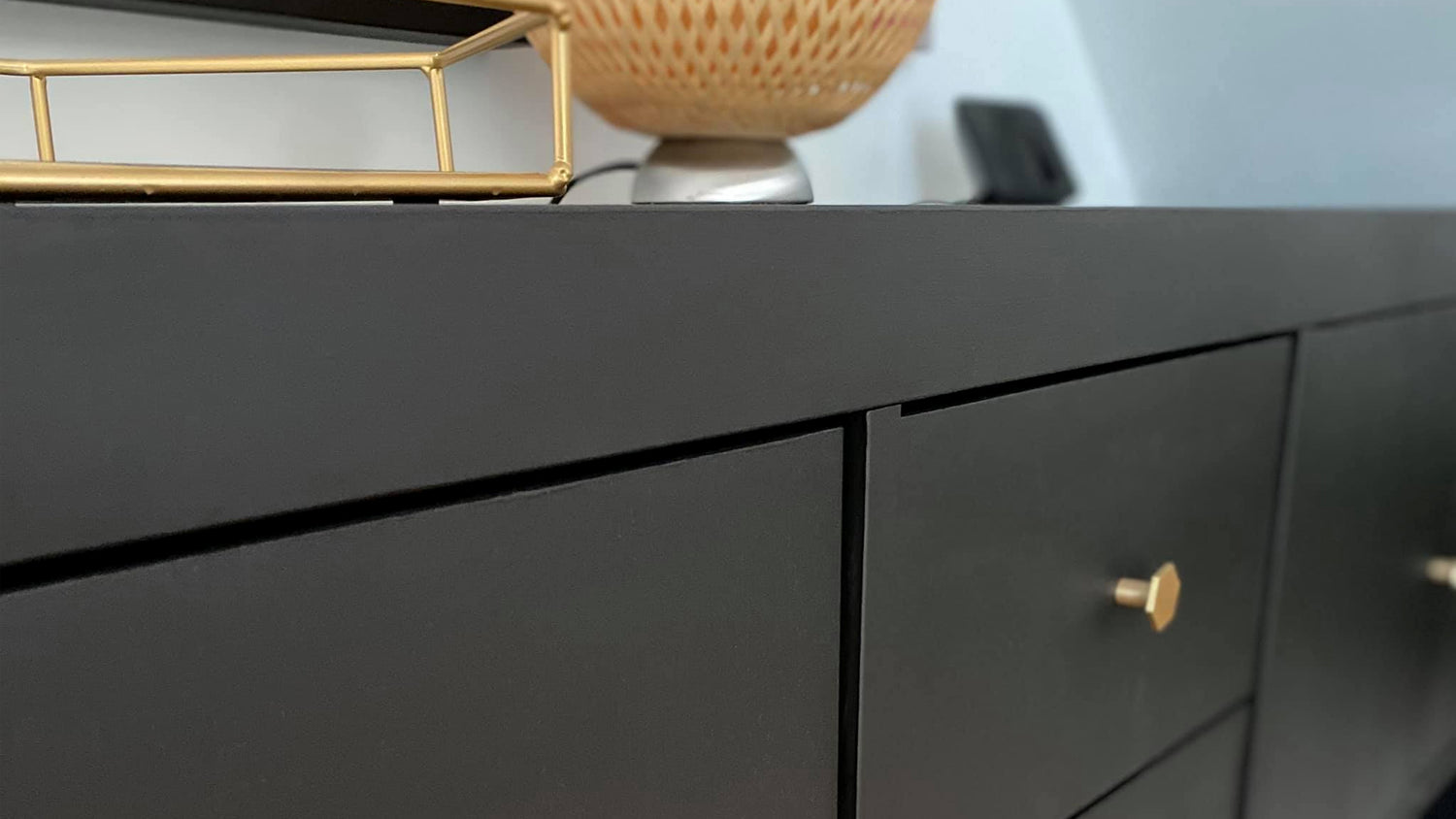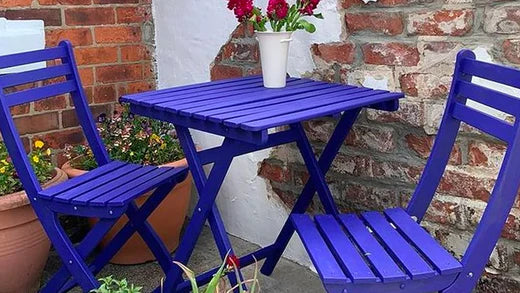From kitchen cabinets to built-in wardrobes, there are so many pieces of furniture with a smooth or glossy laminate finish. Quite simply, that’s because it provides great durability at a low cost.
But what if you want to revamp or just change the colour of those pieces? That’s where painting laminate furniture comes into play. So, is it a practical option? Read on as we answer that question and explain how to paint laminate furniture for the best results.
Can you paint laminate furniture?
When it comes to upcycling or just transforming furniture, some people think that success is only possible with wood furniture. In a way, it’s easy to see why. Glossy or very smooth surfaces don’t provide good adhesion for paint, meaning those solid wood pieces seem a better option.
But in fact, painting glossy furniture is perfectly possible – and not even particularly difficult with just a few tips and tricks! It’s simply a case of getting preparation right and choosing suitable products.
Start by checking the surface
From kitchen cupboards to an IKEA side table, it’s worth assessing the condition of the laminate covering prior to starting any project. Don’t worry if it isn’t perfect – you can still transform and refresh your laminate furniture. But if you make sure the surface you are painting is smooth, you will have a better end result.
Sometimes, it’s fairly simple to make minor chips or dings disappear by using a ready-mixed all-purpose filler and fine sandpaper. More extensive damage can require extra attention – for example, if larger areas of laminate have come off or are loose.
If you have significant areas of peeling laminate wrap, it’s usually best to remove it completely using a heat gun (or sometimes even a hot hairdryer!) and a standard scraper tool. If you decide to do this, then you will also need to assess whether it’s necessary to remove the coating from adjacent panels or doors too. Trust us, the extra effort will be worth it!
You will need to make sure the board under the laminate wrap is stable. If it is 'blown' – puffed up and powdery/flaking – this can be a challenge. If you have small areas affected, you may be able to remove the raised, puffed sections and seal thoroughly before filling and smoothing as required. However, large areas of blown board may mean that proceeding with project is not practical – this is one (rare) instance where even the most determined upcycler may have to admit defeat!
Go for a self-priming paint that's formulated for use on glossy, laminate surfaces. This cuts out the need for special primers, reducing both expense and time.
Frenchic’s Al Fresco range, Lazy Range and Trim Paint are the ideal solution. Self-priming, self-levelling and self-sealing, they have excellent coverage and a robust finish making them ideal for painting laminate kitchen cupboards.
Using a self-priming paint like these means that glossy, laminate surfaces can be painted in the same way as any other. That’s providing you prepare them thoroughly beforehand, which brings us onto…
How to paint laminate surfaces
The process for painting laminate surfaces is no different from painting any piece of furniture – it's all in the prep. Our video and guide to surface preparation provides detailed step-by-step instructions, but these are the two main stages…
Clean and dry
Whether you’re painting gloss kitchen cupboards or a laminate bedside cabinet, the first step is to ensure the surface is very clean using a good degreaser like Sugar Soap. Mix one part with ten parts warm water, apply liberally using a cloth or sponge, then wipe or scrub vigorously from the bottom to the top to avoid run lines. Rinse with fresh water once you’re done and allow furniture to dry completely.
Sand
Next is sanding. This step is vital as it knocks back the glossy surface to provide a ‘key’, which maximises adherence for your paint. It’s worth noting that the glossier the surface, the more thorough a sanding is required.
You don’t need to use an electric sander – a comprehensive hand-sand is usually fine, making sanding blocks a good option. Sand the whole surface thoroughly with a medium- to fine-grade sandpaper then whisk off any dust.
Painting and curing
In terms of actual painting, you can use a brush, roller or paint sprayer depending on your preference and the kind of furniture you’re painting. Rollers are ideal for larger surfaces, and sprayers even more so. That said, you’ll need to dilute your paint with water by around 10% for a sprayer, which could mean an additional coat is needed.
The usual advice applies such as masking off edges, going with the grain and using the right amount of paint to avoid an uneven finish. Take a look at our guide to painting furniture for more detailed instructions.
The other thing to bear in mind is the curing time of your paint. All paints take a little time to fully harden. So, treat the painted surface gently for the first few weeks while the hardening process completes.
What about painting over gloss paint?
It’s not just laminate furniture you can paint over. Other pieces of furniture or fixtures within your home may be shiny thanks to gloss paint or a satin finish. Skirting boards, doors and radiators are often painted using a gloss or satin finish, for example, as are many older pieces of furniture. In this case, the advice is the same – you’ll need to:
- Clean with sugar soap, rinse and allow to dry properly
- Sand the surface thoroughly to provide a key then whisk off the dust
- Paint as above using a brush, roller or sprayer
How to paint laminate furniture without sanding
When it comes to laminate furniture, one of the most common questions is whether you can paint a glossy surface without sanding. Quite simply, people want to skip part of the prep but still get the same results.
We’ll keep it short and sweet – fail to prepare, prepare to fail. Sanding is so critical to painting laminate furniture because the roughed up surface improves the grip, meaning better adhesion and increased durability.
Skip sanding and things might look the part straight after painting, but you’re in danger of finding that your paint scuffs, chips, and doesn’t stand the test of time.
What laminate furniture can I paint?
Knowing how to paint laminate furniture opens up a world of possibilities in your home. With the popularity of laminate furniture increasing over the past couple of decades, most people have at least one piece in their home – if not many more. Popular items include built-in wardrobes, chests of drawers, kitchen cupboards, sideboards and cabinets, shelving units, TV tables and desks.
And the great news is that they can all benefit from a fresh lick of paint to change their style or give them a new lease of life. Take a look at the dresser and drawers below, for example, which had contrasting dated colours on the tops and drawers. Using Whiter than White from the Chalk Wall Paint range – plus some stylish new hardware – they’ve been transformed into a modern, designer-esque set that matches the bright, new-look bedroom.
Another benefit of painting glossy wood furniture is that you can match pieces of furniture, regardless of their original colour. That could be a coffee table and TV stand moved together from separate rooms. Or you can even secure units together like the shelves below. Despite being mismatched to start with, they’ve been combined to make one large storage and display unit – which is all tied together using Blackjack.
It’s not just plain coloured laminate furniture that can be renovated either. Many pieces come with a glossy wood effect that can be seemingly impossible to match with other furniture – given that there are so many different shades of that wood effect out there. The solution? Prep and paint with your favourite colour (like Smudge below) to create something that’s stylish, versatile and looks completely new…
Last but certainly not least are glossy kitchen cupboards. While they’re not a standalone piece of furniture, they can still be transformed to great effect. A little more prep is required to remove the grease and grime that comes from this part of the home. You’ll also find the project easier if you remove hinges and handles before sanding and painting. Take a look at our video and guide to painting kitchen cupboards for step-by-step advice.
Show us your glossy furniture transformations
Ready to get started on your furniture? At Frenchic, you’ll find a selection of stunning paint colours with self-priming properties for laminate surfaces. Don’t forget to tag us in your transformations on Instagram and Facebook – and follow us for more inspiration from like-minded DIY lovers, home décor fans, and upcycling enthusiasts.








